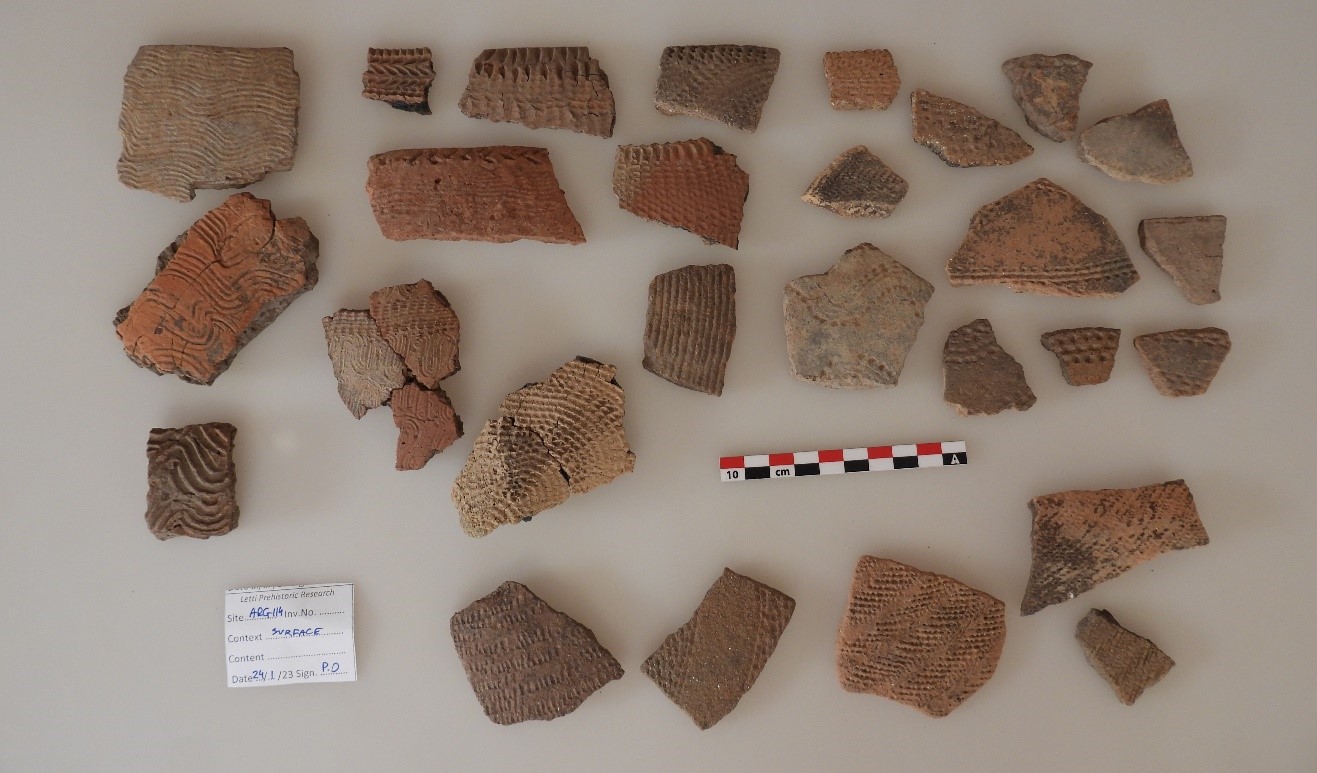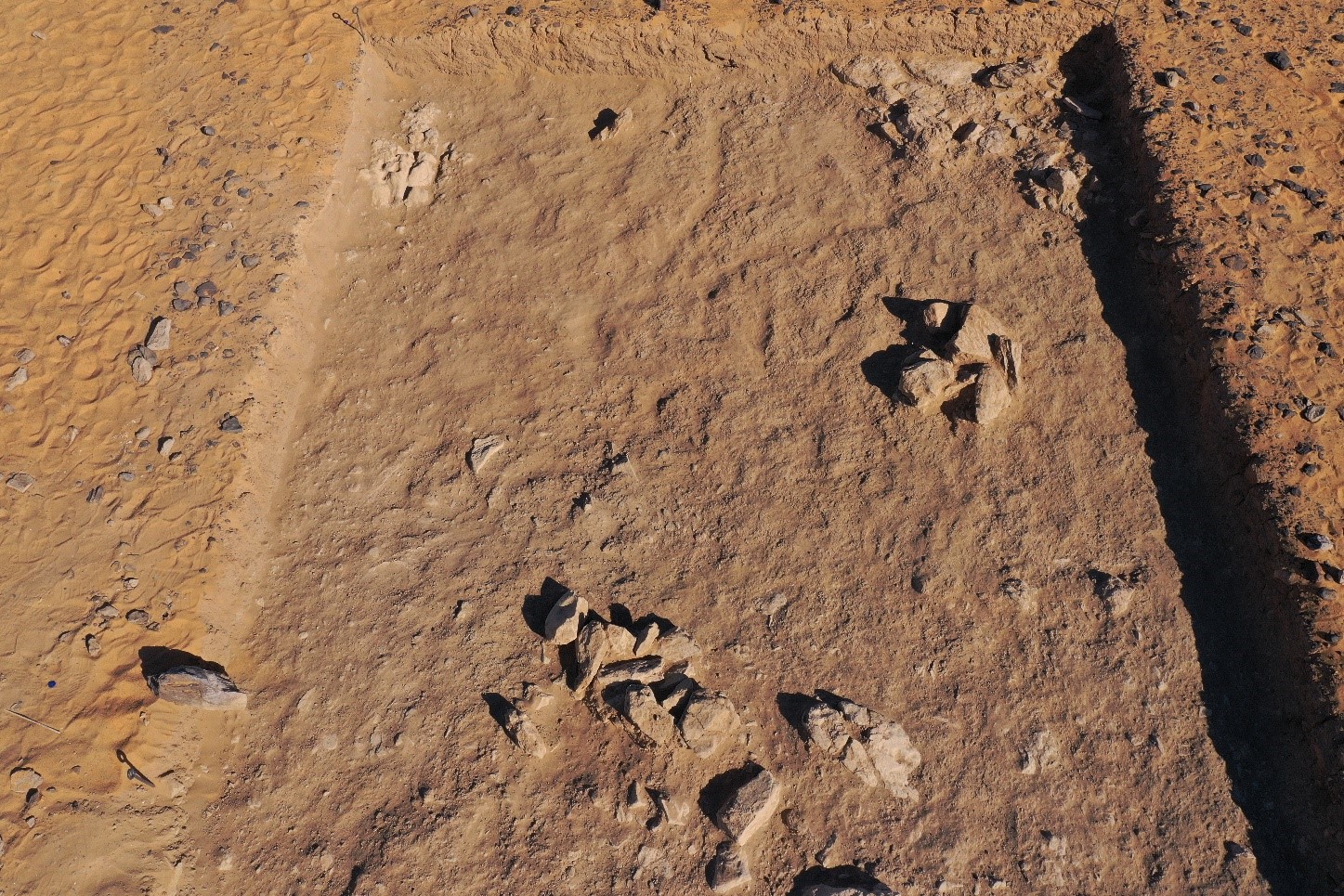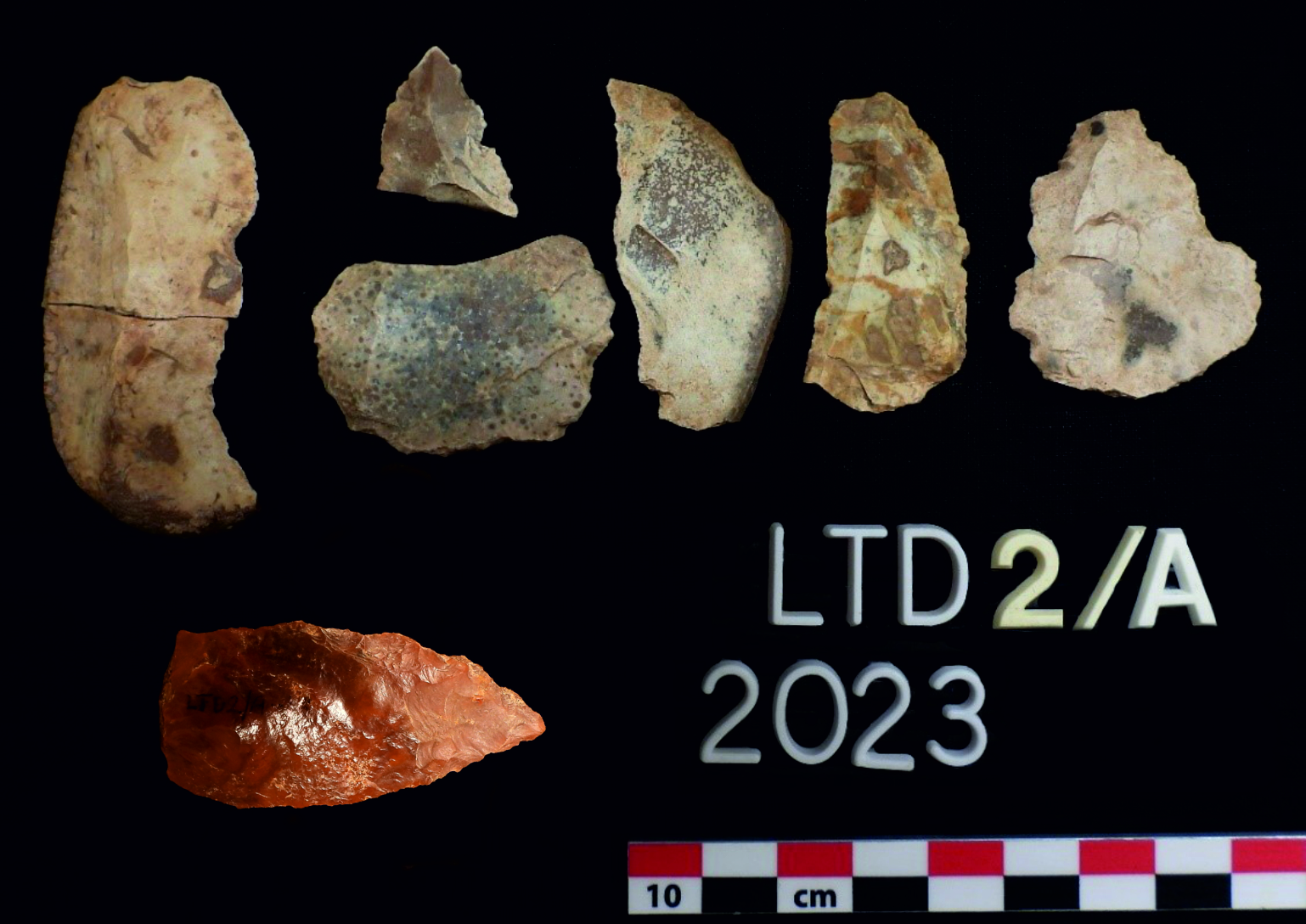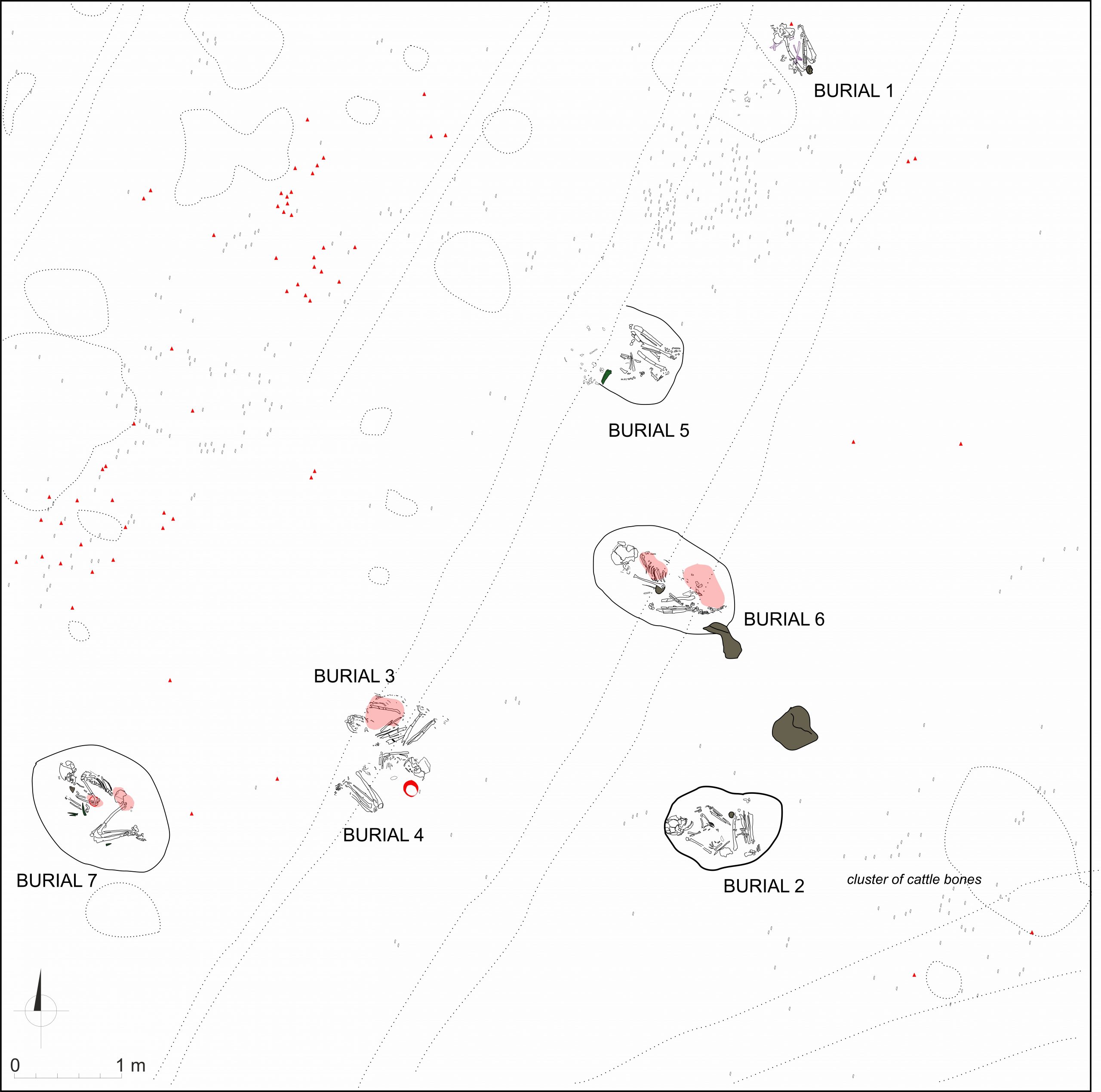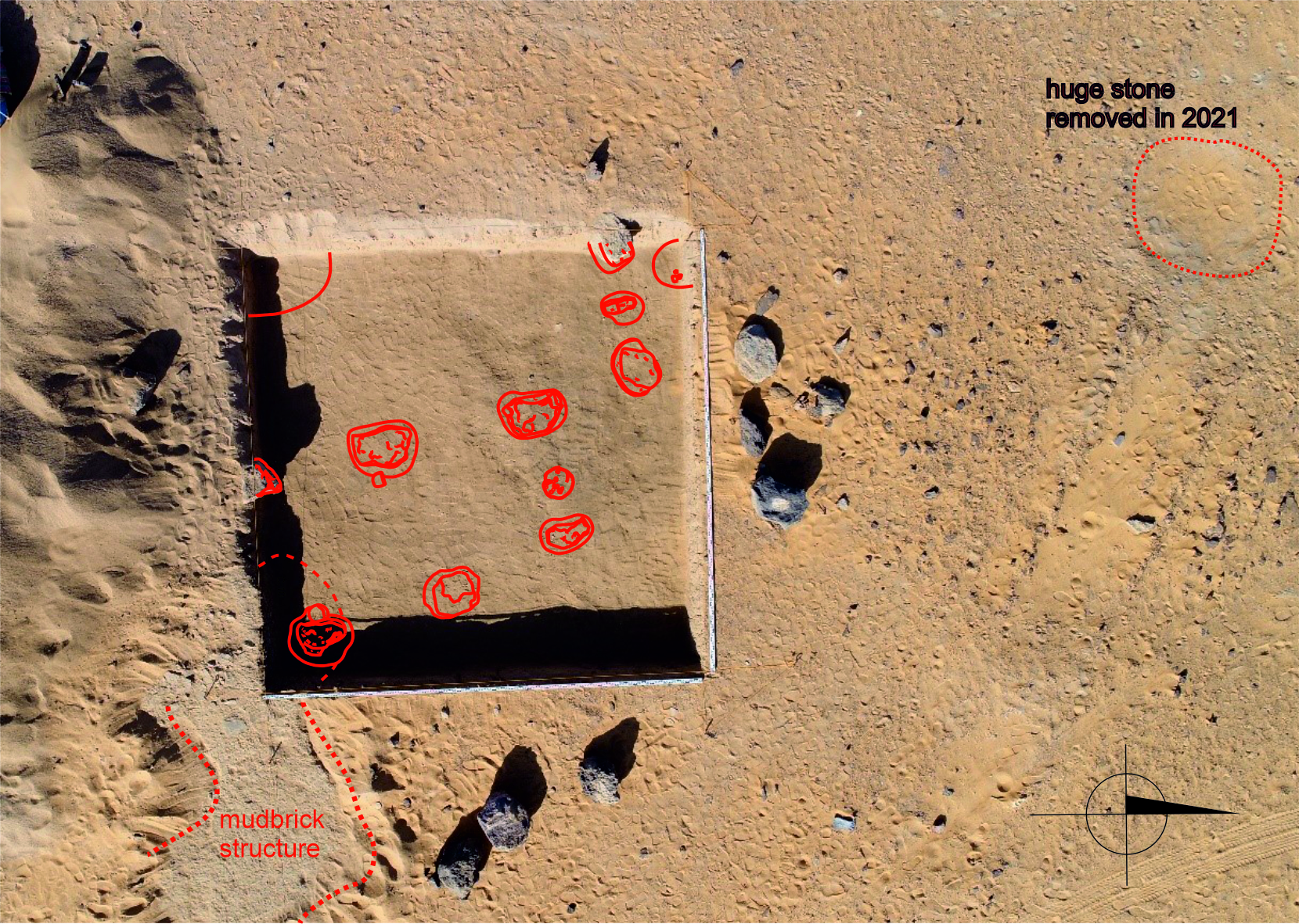Piotr Osypiński, Marta Osypińska, Justyna Kokolus, Paweł Wiktorowicz, Roman Łopaciuk, Amel Hassan Gismallah, Franciszek Osypiński
The Dongola Reach follow-up research project involved excavations on two archaeological sites at Letti – LTD 1 and LTD 2 – were carried out during the 2023 season. Other field activities included large-scale mapping with RTK GPS, mapping of three re-excavated early Holocene sites (Argi Cemetery, Argi Crossroad and Argi 2) and follow-up surveys of the entire area (Argi).
Both areas are widely known for the presence of prehistoric sites, noted as early as in mid-20th century publications. Subsequent generations of Dongola Reach researchers have completed maps of prehistoric settlement in both the Letti Basin and the Argi mantiga (arab: district). The previous field season of the current project allowed to expand our knowledge of the prehistoric settlement in the desert part of Letti and its chronology in absolute terms.
Three stages of human presence in the area draw our attention the most. The oldest is the Pleistocene period and settlement relics, which provide the closest geographic parallel to the Affad discoveries. Another is the Early Holocene sites. Last year’s research at the LTD2 site allowed for the first time to structure the settlement phases of communities using pottery, a standardized arsenal of insert (flint) tools and stone querns. These were the oldest post-Pleistocene communities in the Nile Valley, although it has so far been problematic to separate and distinguish mixed collections comprising both material correlates of aquatic (Karmakol) cultures and other pastoral (Tergis) groups. Both of these adaptation strategies were in place before the Holocene climatic optimum (8.2 ka). Finally, the last phase that draws our attention is the period of formation of the first indigenous civilizations along the Nile. Both Neolithic (5th millennium BC) and Kerman (3rd-2nd millennium BC) sites provide new data on the genesis of Nilotic/Kushite communities, whose economic and ideological focus was on cattle herds. Reminiscences of this cultural complex are present in all later Nubian civilizations.

